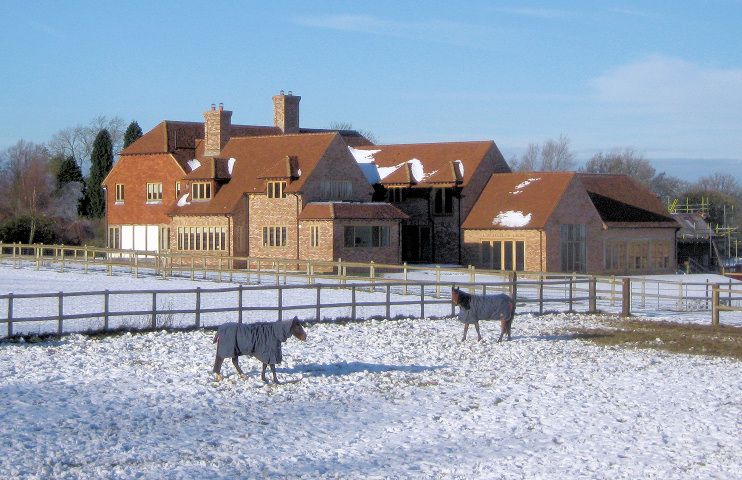Horns Green
Horns Green, Bromley
A small outpost of Cudham, which lies half a mile to the north, Horns Green is London’s most south-easterly settlement

Horns Green is situated on high ground, gently rising into the North Downs. The centre of the hamlet is 216 metres (709 feet) above sea level.
David Mills, in his Dictionary of London Place Names, says that Horns Green’s identity is “to be associated with the family of John de Horne, 1292, whose name derives from Old English horn, ‘a horn-shaped feature, a projecting piece of land’.”
This locality was part of the extensive Kentish landholdings of the earls of Derby. The 17th earl sold the Cudham portion of the family’s estates in 1909. From around the time of this sale Horns Green grew rapidly in size, by the standards of a tiny village, but its expansion was halted by the post-war creation of the green belt.
Nowadays, Horns Green has several 19th-century houses and cottages in Kentish flint and brick, a few unexciting bungalows and a handful of executive homes built in the late 20th and early 21st centuries, and set well back from the road. The newer residences have all replaced properties that were built before the introduction of green belt restrictions.
According to Historic England, Horns Green’s most precious property is Flint House. The grade II listed building dates from either the late 18th or early 19th century. Rowan Cottage, Tiny Cottage and Goodfriday Farm are locally listed. A short distance to the south, Portlands, its oast house and drying shed, stable buildings and neighbouring cottage are also grade II listed – but now we have crossed from the borough of Bromley into the district of Sevenoaks, and are thus no longer in London.
The most recent and grandiose of the modern structures is Cedar Farm, a six-bedroom mansion that has replaced a real farm. In 2009 Bromley council’s chief planning officer recommended that enforcement action be authorised to secure the removal of its unapproved outbuildings, which were “clearly excessive in size and harmful [to the integrity of the green belt] in their design, bulk and materials.” The above photograph of Cedar Farm was taken in December 2010.*
London’s premier blogger Diamond Geezer has questioned whether Horns Green “technically exists” at all, given that cartographers are the only people who appear to know of it. No one who lives here seems to mention Horns Green as their address (except at Horns Green Cottage), preferring to refer to either Cudham or Knockholt.
